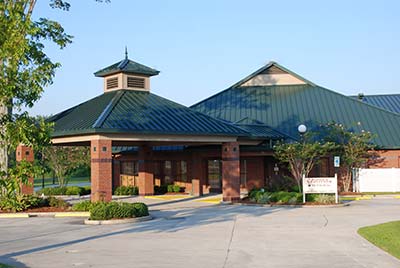Pain Blog: Is Your Lifestyle Causing You Back Pain?
 When back pain appears, as it does for 80% of adults, you may be one of the lucky ones that fully recover. You could also be one of the 20% whose single bout turns into long-lasting and debilitating back pain.
When back pain appears, as it does for 80% of adults, you may be one of the lucky ones that fully recover. You could also be one of the 20% whose single bout turns into long-lasting and debilitating back pain.
Or you can choose a different path. You can take yourself out of the running and prevent many causes of back pain by making a few lifestyle changes.
At Headache & Pain Center, we help our patients find relief from severe and chronic back pain. In many cases, daily movements and lifestyle choices are the top causes of back problems. Here are a few changes you can make to prevent back pain.
Pain Blog Articles
Herniated Disk or Muscle Strain?
Does Arthritis Cause Deformity?
Is Your Lifestyle Causing Back Pain?
Why You Shouldn't Ignore Neck Pain
What Could Be Causing Spine Pain?
Remedy & Prevent Sciatica Pain
Can I Get a Spinal Cord Stimulator?
Up your exercise game
Staying active is one of the best ways to avoid back problems. When you don’t use your back muscles, they become weak and stiff, which in turn causes new pain or irritates an existing back condition.
A strong back goes a long way toward preventing back pain. You can strengthen your back and maintain flexibility with exercises that target your core muscles, such as knee-to-chest stretches, cat stretches, side leg lifts, and the Superman move (lay on your stomach, stretch both arms in front of you, and then raise both hands and feet off the floor as though you’re flying).
You can also begin slow and easy by simply taking regular walks. When you walk, you strengthen your back by using the muscles that support your spine. The movement also supports the health of your spine and muscles as it boosts circulation.
During your walk, maintain good posture: Stand up straight, tighten your tummy muscles, look forward, relax your shoulders, and wear supportive footwear.
Good walking posture works your core muscles. Bad posture adds more stress to your back.
Maintain good posture
Pay attention to posture all the time, not just when you’re walking. Poor posture, or slouching, is a top culprit when it comes to lower back pain. The vertebrae in your spine have a natural alignment and curvature that keeps your back strong and moveable.
Good posture keeps your spinal vertebrae in proper alignment. On the other hand, poor posture leads to muscle fatigue, pulled ligaments, and back pain.
Drop excess weight
Few lifestyle factors stress your back as much as forcing your spine to carry extra weight. Being overweight is one of the top risk factors for the spine conditions that cause low back pain, such as arthritis, herniated discs, and sciatica.
When your spine carries too much weight, it changes its position to compensate for the stress, straining the muscles and resulting in muscle spasms. For example, too much belly fat pulls your pelvis and lower spine forward, placing excessive strain on your lower back.
It’s not easy to lose weight, but it comes down to two basic lifestyle choices: eating fewer calories than your body uses and getting more fat-burning exercise.
Take breaks from sitting
When you sit, it feels like you’re relaxing your back. At the same time, the force of your body weight settles at the bottom of your spine, putting a lot of stress on your lower back.
If you have a job that demands prolonged sitting, take regular breaks. Your breaks don’t need to be long — just a few minutes to stand up, stretch, and walk around — but try to fit one in every 30 minutes or so.
Lift heavy items with care
Did you know that for every 10 pounds you lift, you put 100 pounds of pressure on your back? That’s why following proper lifting technique is so important for preventing back problems.
When lifting, you should bend at your knees and keep your back straight. Bending at your waist forces your spine to bear the burden of the heavy item and your body weight. Also, never twist while lifting and when you carry a heavy object, hold it close to your body.
If you need help preventing or easing back pain, call our team at Headache & Pain Center or book an appointment online today. Our offices are in Gray and New Iberia, Louisiana.



